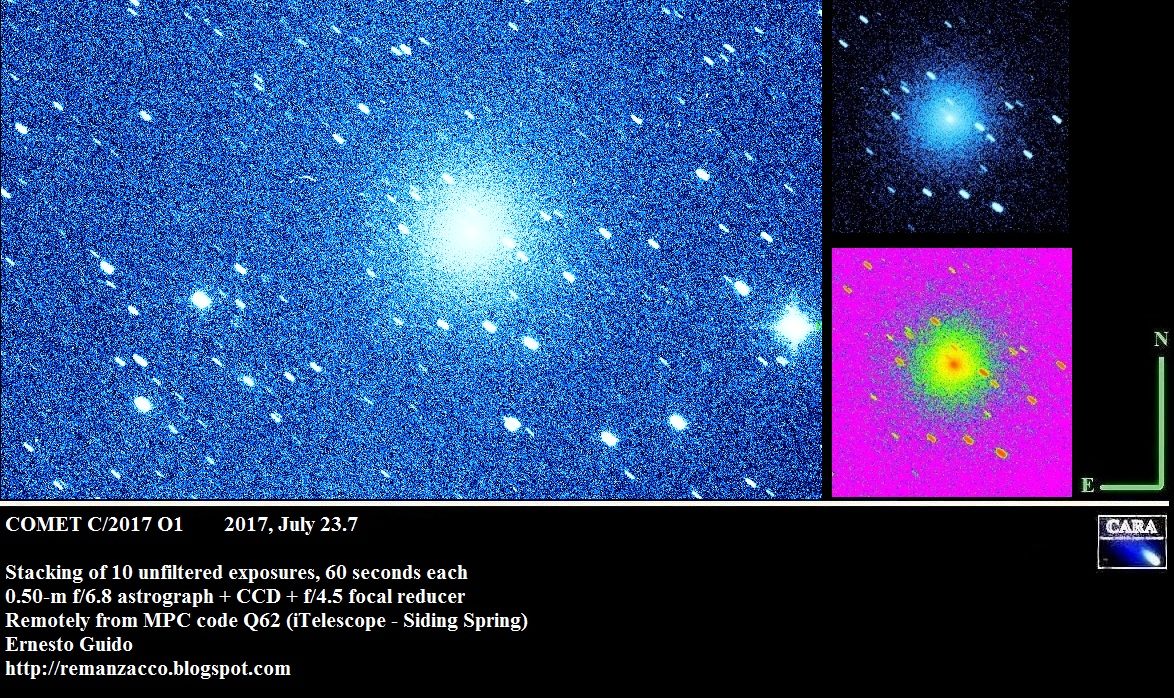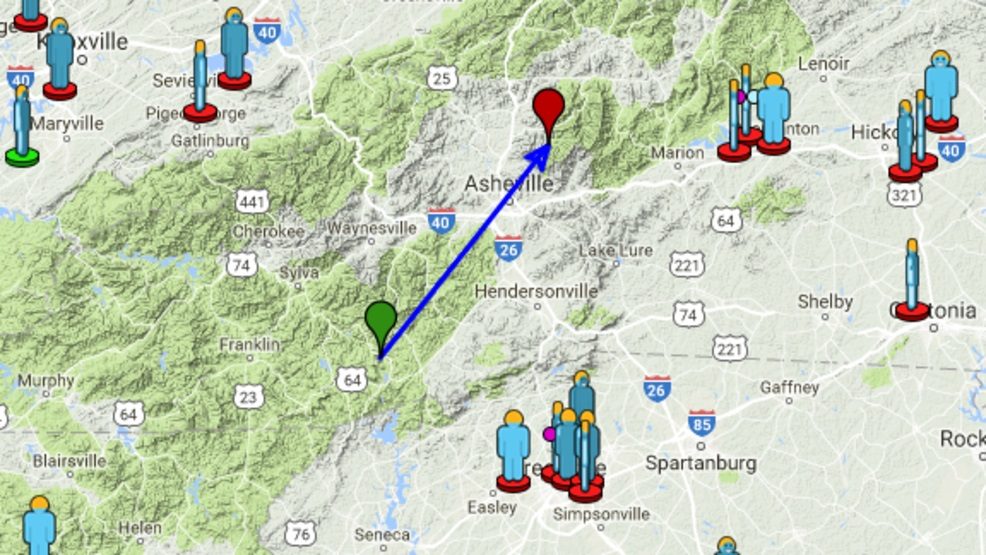CBET nr. 4414, issued on 2017, July 24, announces the discovery of a comet (magnitude ~15.3) in the course of the "
All-Sky Automated Survey for Supernovae" (
ASASSN) program, from images taken with the 14-cm "Cassius" survey telescope at Cerro Tololo on July 19.32 UT.
The new comet has been designated C/2017 O1.I performed follow-up measurements of this object, while it was still on the neocp. Stacking of 10 unfiltered exposures, 60 seconds each, obtained remotely on 2017, July 23.7 from Q62 (
iTelescope network) through 0.50-m f/6.8 astrograph + CCD + f/4.5 focal reducer, shows that this object is a comet with a sharp central condensation surrounded by diffuse coma about 3 arcmins in diameter.
My confirmation image (click on it for a bigger version)

© Remanzacco Blogspot
Below you can see the discovery image by ASASSN survey

Comment: It is well worth remembering what can come out of the sky, without any warning at all, like the Chelyabinsk meteor fireball.
Even NASA's own space data supports citizens' recent observations, namely the inconvenient fact that meteor fireballs are increasing dramatically.